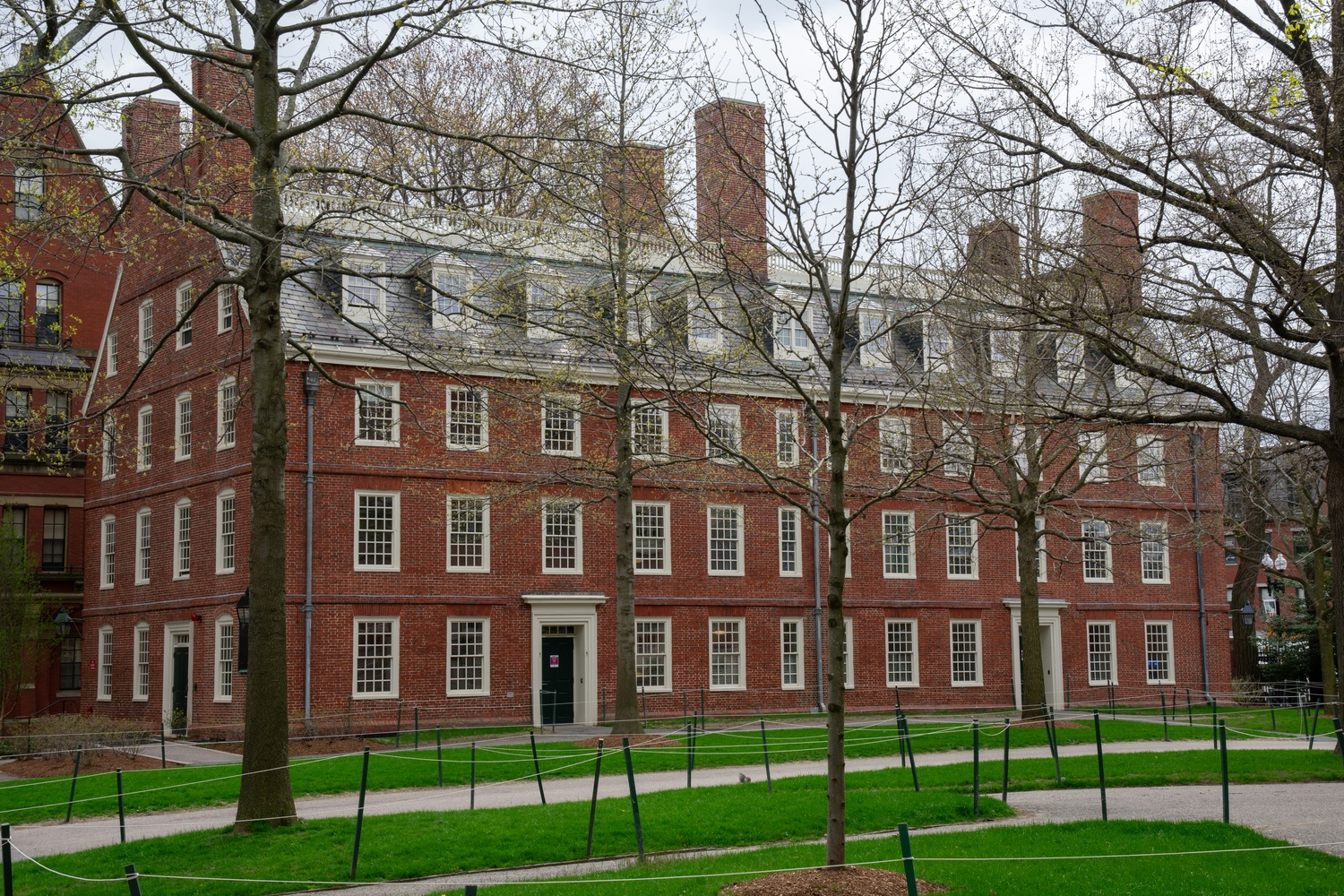Harvard Forest stands as a pivotal site for climate change research, offering a unique lens into how global warming alters forest ecosystems. Researchers like Emery Boose and Clarisse Hart are at the forefront of the Harvard Forest study, keenly observing the impact of climate change on the region’s vibrant biodiversity. With changes throughout the sprawling 4,000-acre forest, they document shifts that reflect broader environmental research trends. The effects of climate change are not just theoretical; they resonate deeply as scientists witness firsthand the evolution of their cherished landscape. Together, their work illustrates a narrative that intertwines passion for nature with urgent scientific inquiry.
Nestled in Massachusetts, Harvard Forest represents a crucial laboratory for investigating the ramifications of global warming on wooded areas. This extensive study aims to unveil essential insights into how climate fluctuations disrupt ecological balance and species diversity. As experts in forestry and ecology delve into extensive data and hands-on experiments, their observations reveal significant shifts in flora and fauna. The relationship between climate patterns and environmental systems is becoming increasingly evident, shining a spotlight on the urgent need for adaptive strategies. Consequently, Harvard Forest not only serves as a site of academic inquiry but also as a poignant reminder of nature’s vulnerability in the face of climate challenges.
Understanding Climate Change Through the Harvard Forest Study
The Harvard Forest study serves as a crucial touchpoint for understanding the nuanced effects of climate change on forest ecosystems. Researchers at this revered site have been collecting invaluable data on temperature and precipitation trends going back decades, allowing them to detect patterns that reveal the impacts of a warming climate. Their findings show persistent shifts in seasonal weather patterns, with winters arriving later and temperatures remaining higher, which directly influence the health and diversity of species in the forest. This research not only aids in documenting environmental changes but also provides critical insights that can help inform broader climate change initiatives globally.
Moreover, the interdisciplinary approach adopted by Harvard Forest, integrating diverse scientific inquiries, illustrates the multifaceted nature of climate change research. As scientists monitor pest invasions and shifts in tree species composition, they gain a deeper understanding of how these changes impact biodiversity and ecosystem resilience. For instance, the emergence of the woolly adelgid is altering the landscape, threatening iconic hemlock trees, and subsequently changing nutrient cycling within the forest. Awareness of such dynamics is essential for developing conservation strategies tailored to mitigate the negative impacts of climate change.
The Impact of Climate Change on Forest Ecosystem Changes
The impact of climate change on forest ecosystems is becoming increasingly apparent in regions like Harvard Forest. With every passing year, the physical characteristics of the landscape are shifting, as evidenced by the changing composition of tree species and the health of existing flora. As warmer temperatures disrupt traditional seasonal cycles, species that once thrived under specific conditions find themselves struggling to survive. The decline of hemlocks, for instance, is a telling indicator of how delicately balanced these ecosystems are, and how susceptible they are to external pressures like climate change.
In addition, the resilience of these ecosystems is being tested as invasive species expand their range due to favorable climate conditions. The Harvard Forest study shows that while black birch trees are filling the void left by dying hemlocks, the repercussions of these shifts extend beyond just visual changes. Soil chemistry, nutrient distribution, and even water retention abilities are influenced by which species dominate the forest landscape. Such ecosystem changes emphasize the interconnectedness of species and highlight the cascading effects climate change can have on forest health and biodiversity.
Personal Experiences Reflecting Climate Change in Harvard Forest
At the personal level, researchers and local community members at Harvard Forest are bearing witness to the tangible impacts of climate change on their beloved landscape. Observations shared by senior ecologists and conservationists alike reveal poignant shifts in familiar scenes—from the quality of winter snow to the vibrancy of summer foliage. As Emil Boose points out, the winters are not as icy as they once were, causing both practical challenges for winter sports enthusiasts and emotional responses from long-time residents who appreciate the seasonal rhythms of nature. This subjective experience underscores the broader narrative of climate change’s pervasiveness.
Similarly, Clarisse Hart highlights the shared connection to the land, emphasizing that every staff member has personal stories about how the changing landscape affects their relationship with nature. This bond fosters a deeper commitment to conservation efforts aimed at adapting to and mitigating the impacts of climate change. As Harvard Forest grapples with these transformations, the collective memory of what once was is a powerful motivator for continued research and conservation action.
Climate Change Adaptation Strategies at Harvard Forest
In light of the rapid changes evidenced at Harvard Forest, researchers are actively exploring adaptation strategies for the forest ecosystem. Forest management practices are being re-evaluated based on ongoing climate research, with an emphasis on enhancing resilience to the pressures of climate change. This includes fostering genetic diversity among tree species, understanding their adaptive capacities, and ensuring that the forest can evolve in response to shifting climate conditions. Some scientists are even looking into how to cultivate more resilient species to counteract the encroachment of invasive pests, thereby maintaining biodiversity.
Additionally, engagement with the local community plays a crucial role in these adaptation strategies. Outreach programs at Harvard Forest aim to educate the public about the realities of climate change, encouraging collective action to promote environmental stewardship. By fostering an understanding of the forest dynamics and the challenges posed by climate change, the message resonates more deeply, prompting individuals and organizations alike to participate in sustainability efforts and conservation initiatives.
Climate Change Research: The Future of Environmental Studies
The ongoing climate change research at Harvard Forest is not just about observing change; it is fundamentally about shaping our understanding of environmental studies as a whole. The long-term datasets collected meticulously over the years provide an unprecedented opportunity to assess long-term environmental trends. Researchers there are at the forefront of formulating models that predict how forest ecosystems may respond to future climate scenarios, which is critical for creating effective conservation strategies.
As this body of research continues to expand, it highlights the need for interdisciplinary collaboration across fields including ecology, climatology, and social science. A holistic approach can yield insights that transcend traditional boundaries of study. The lessons learned from Harvard Forest will inform policymakers, environmental planners, and educational programs, reinforcing the importance of rigorous scientific inquiry in addressing the pressing challenges posed by climate change.
The Social Implications of Changing Forest Ecosystems
The social implications of changing forest ecosystems, as observed in Harvard Forest, are profound and far-reaching. For the surrounding communities, these changes can affect everything from recreational opportunities to local economies that depend on forest health. As traditional winter sports face uncertainty due to warming temperatures and changing snowfall patterns, economic activities tied to these seasons may also decline, creating challenges for local businesses and residents who rely on tourism and outdoor engagement.
Moreover, emotional and cultural ties to the landscape are at stake. The shared experiences of individuals who grew up in these forests are integral to community identity. Changes in the forest, therefore, evoke concern not only about environmental degradation but also about the loss of connection to nature and heritage. Therefore, it’s crucial for community engagement strategies to address these sentiments, fostering a collective effort to both understand and combat the impacts of climate change.
Innovation in Climate Change Research Methods at Harvard Forest
Innovative research methods at Harvard Forest highlight the role of technology in climate change studies. The deployment of advanced monitoring instruments and data collection techniques allows researchers to track microclimatic changes with unprecedented detail. For instance, the use of towers that measure gas exchange between the forest and atmosphere gives scientists crucial insights into the forest’s role in carbon dynamics. This kind of technological innovation is essential for generating accurate emissions data and understanding the broader implications for climate change mitigation.
In addition to technology, Harvard Forest encourages collaborative field studies that integrate citizen science initiatives alongside academic research. These collaborations empower local volunteers and educators to participate in data collection and analysis, significantly enhancing the research capacity available at the forest. By democratizing the research process, the forest fosters broader public involvement in climate change issues and cultivates a strong communal interest in environmental stewardship.
The Role of Policy in Addressing Climate Change Effects
Effective policy is crucial for addressing the impacts of climate change observed at Harvard Forest. As researchers unravel the complexities of forest ecosystem changes through their studies, findings need to be translated into actionable policies that can mitigate these effects. Policymakers can utilize the data collected to craft legislation aimed at supporting conservation efforts, funding research initiatives, and promoting sustainable land use practices that can help forests adapt to changing climates.
Furthermore, collaboration between scientists, policymakers, and community stakeholders can lead to evidence-based decision-making that is responsive to the unique needs of forested regions. This kind of proactive policy formulation, informed by the latest research from sites like Harvard Forest, is essential for fostering resilient ecosystems that can withstand the challenges posed by climate change.
Frequently Asked Questions
What is the significance of Harvard Forest in climate change research?
Harvard Forest is a crucial site for climate change research, providing decades of data on temperature and precipitation since the 1960s. This long-term information allows researchers to observe significant trends in climate change, particularly the impacts of warming winters and changes in forest ecosystem dynamics.
How has climate change impacted the forest ecosystem at Harvard Forest?
The impact of climate change at Harvard Forest is evident through changes in species composition, such as the decline of hemlocks and the rise of black birch. Researchers observe shifts in the understory and canopy, as well as altered soil chemistry and hydrology, all of which influence the health and diversity of this vital ecosystem.
What specific changes have researchers observed in the Harvard Forest study due to climate change?
In the Harvard Forest study, researchers have noted a trend towards warmer and wetter conditions, with earlier springs and altered snowfall patterns. For example, the reduction in snowpack and milder winters have allowed invasive species, such as the woolly adelgid, to thrive, leading to the decline of hemlock trees.
What role does Harvard Forest play in understanding environmental research related to climate change?
Harvard Forest serves as a natural laboratory for environmental research, where scientists conduct approximately 100 active projects at any given time. This research is vital for understanding the multifaceted impacts of climate change on forest ecosystems, enabling the development of informed conservation and management strategies.
How does the Harvard Forest climate change study contribute to the understanding of forest ecosystem changes?
The Harvard Forest climate change study contributes to understanding forest ecosystem changes by providing empirical evidence of how climate dynamics alter species interactions, nutrient cycling, and overall forest health. Researchers document specific ecological responses, which help predict future changes in similar ecosystems under climate stress.
What are the future implications of climate change as observed in the Harvard Forest?
Future implications of climate change observed in the Harvard Forest include shifts in species dominance, changes in ecosystem services such as carbon storage, and potential loss of biodiversity. The ongoing research emphasizes the need for adaptive management strategies to mitigate these impacts and foster resilience within the forest ecosystem.
How do researchers at Harvard Forest track the effects of climate change over time?
Researchers at Harvard Forest track the effects of climate change over time using a combination of long-term ecological monitoring, experimental setups, and data collection on weather patterns and biological responses. This comprehensive approach allows for the assessment of changes in forest dynamics and informs predictions about future ecological scenarios.
What is the relationship between invasive species and climate change at Harvard Forest?
The relationship between invasive species and climate change at Harvard Forest is evident as rising temperatures and changing precipitation patterns create favorable conditions for pests like the woolly adelgid. This invasive insect has significantly impacted native hemlock populations, demonstrating how climate change can exacerbate biological invasions.
How do the changes at Harvard Forest reflect broader trends in climate change?
The changes at Harvard Forest reflect broader trends in climate change by highlighting the interconnectedness of climatic factors and ecological responses. The decline of hemlocks and the emergence of new species not only represent regional shifts but also serve as indicators of climate impacts that could affect forests globally.
What can be learned from the resilience of ecosystems like Harvard Forest in the face of climate change?
The resilience of ecosystems like Harvard Forest teaches valuable lessons about adaptability and recovery in the face of climate change. Understanding how forests manage to cope and adapt can inform conservation efforts and enhance our ability to protect biodiversity and ecosystem services in a rapidly changing climate.
| Key Points | Details |
|---|---|
| Research Focus | Senior investigators are studying climate change effects at Harvard Forest, emphasizing personal experience with these changes. |
| Changing Environment | The forest is experiencing significant shifts due to warming temperatures, including dying hemlocks and thriving black birches. |
| Data Collection | Research at Harvard Forest is based on long-term weather data, allowing for analysis of climate trends over decades. |
| Community Connection | Researchers feel a strong connection to the forest, resulting in a shared commitment to understanding and mitigating climate impacts. |
| Ecosystem Resilience | Despite the threats, there is hope for resilience as forests adapt to changes, although certain tree species face significant decline. |
Summary
Harvard Forest climate change efforts are at the forefront of understanding how ecosystems adapt to shifting environmental conditions. Researchers at the Harvard Forest are witnessing firsthand the impacts of climate change, with observable alterations in species dynamics and forest structure. The data collected here, spanning decades, reveals long-term trends towards a warmer and wetter climate, which are essential for informing conservation strategies. As the forest changes, the research team remains committed not only to studying these phenomena but also to fostering public awareness and education about the ongoing environmental challenges. This commitment exemplifies an integral part of sustainability and environmental stewardship in the face of climate change.




